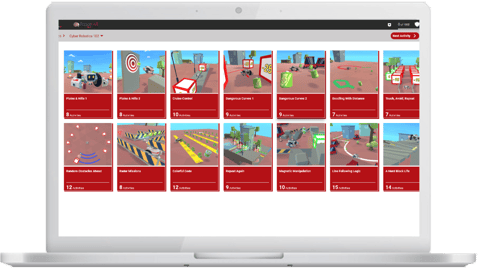Current research results are in favor of early childhood experiences for students, especially those who are disadvantaged. This education is a great equalizer because it provides a rich, common foundation for children who may have diverse backgrounds and experiences.
 Photo by Arif Riyanto on Unsplash
Photo by Arif Riyanto on Unsplash
So what does that mean?
Students are capable of learning far more than you think they can. Most teachers will tell you that children will rise up to the standard you set, so you may as well elevate the bar for learning.
And that brings us to STEM education in early childhood. That’s right – early childhood is the perfect time to begin science, technology, engineering, and mathematics instruction.
Early is not too early
STEM learning fits in every grade level because the material is adaptable to the developmental age of the child. You may think there is no way for a child that young to engage in advanced engineering or mathematical concepts, but kindergartners have been doing algebra forever. You won’t see four and five-year-olds huddled in groups as they fervently work out quadratic equations, but you will see them solving for X.
Early childhood teachers routinely teach pattern recognition to their students. Walk down the early childhood hallway in a school, and you’ll see student work that displays their interpretations of patterns: circle-circle-square, circle-circle -square, circle-circle -square, or square-diamond-circle, square-diamond-circle, square-diamond-circle.
Teachers ask their students to figure out what comes next in the pattern. Students may not realize they are solving for X (a difficult abstract concept), but they can recognize patterns in mathematics and science. The foundation for algebra – and other advanced concepts – takes place in kindergarten.
What does early STEM education look like?
Here are more ways young children can participate in STEM learning:
-
Science – Give students the chance to explore and understand the world around them with a variety of lessons in science. Here are some lessons that can be helpful: 100 Fun Science Experiments / Science Fair Projects for Kids
-
Technology – Something as small as being able to differentiate between serifed and non-serifed fonts is a critical thinking skill learned in early childhood.
-
Engineering –Building a structure from given materials is an example of engineering.
-
Mathematics—Teach lessons that incorporate number sense and representation.
STEM lessons engage young students, satisfying the natural curiosity of a child, through fun, interesting and hands-on projects. Begin the lessons early.
A proverb from the Buddha states, “When the student is ready, the teacher will appear.” It’s about having the right teacher at the right time, and early childhood can be the right time for STEM.
Learn about STEM with RobotLAB and CoderZ!

CoderZ is an online educational environment that improves students' 21st-century skills, while they are having fun programming their own virtual cyber robot. CoderZ and RobotLAB have different lessons to do at home! Check them out Here
Check the original article here: https://www.thetechedvocate.org/early-kids-begin-stem-education/

